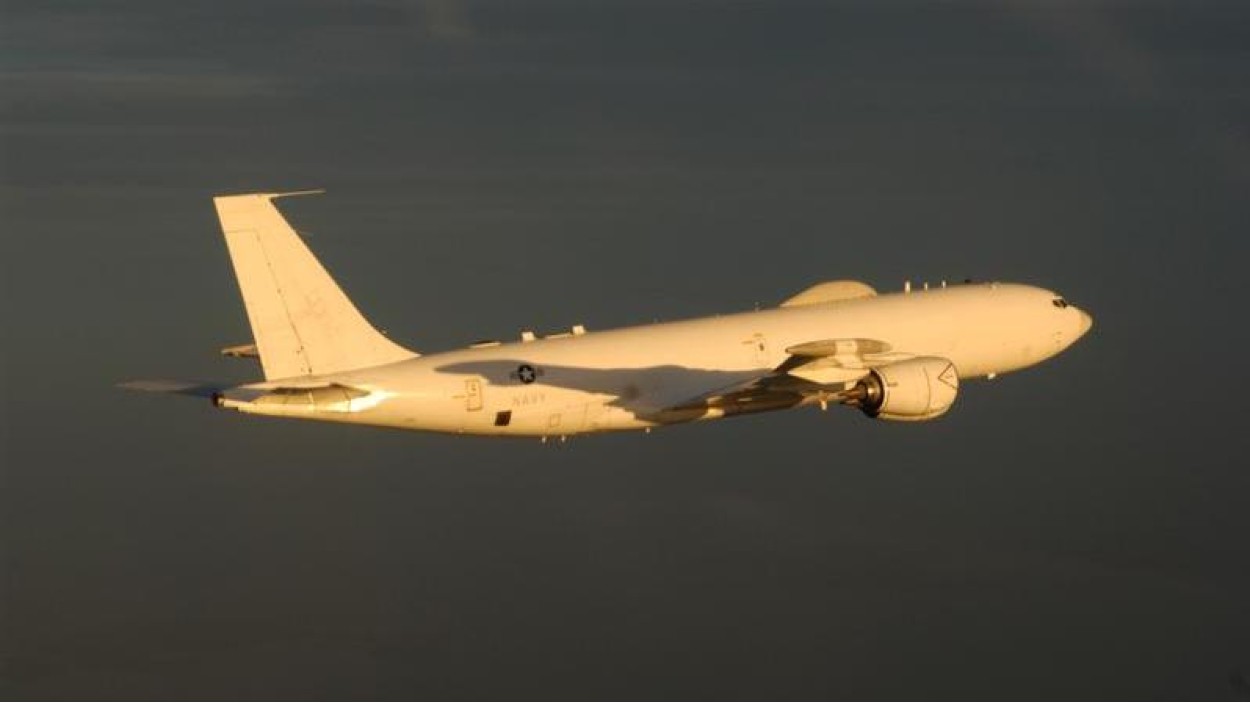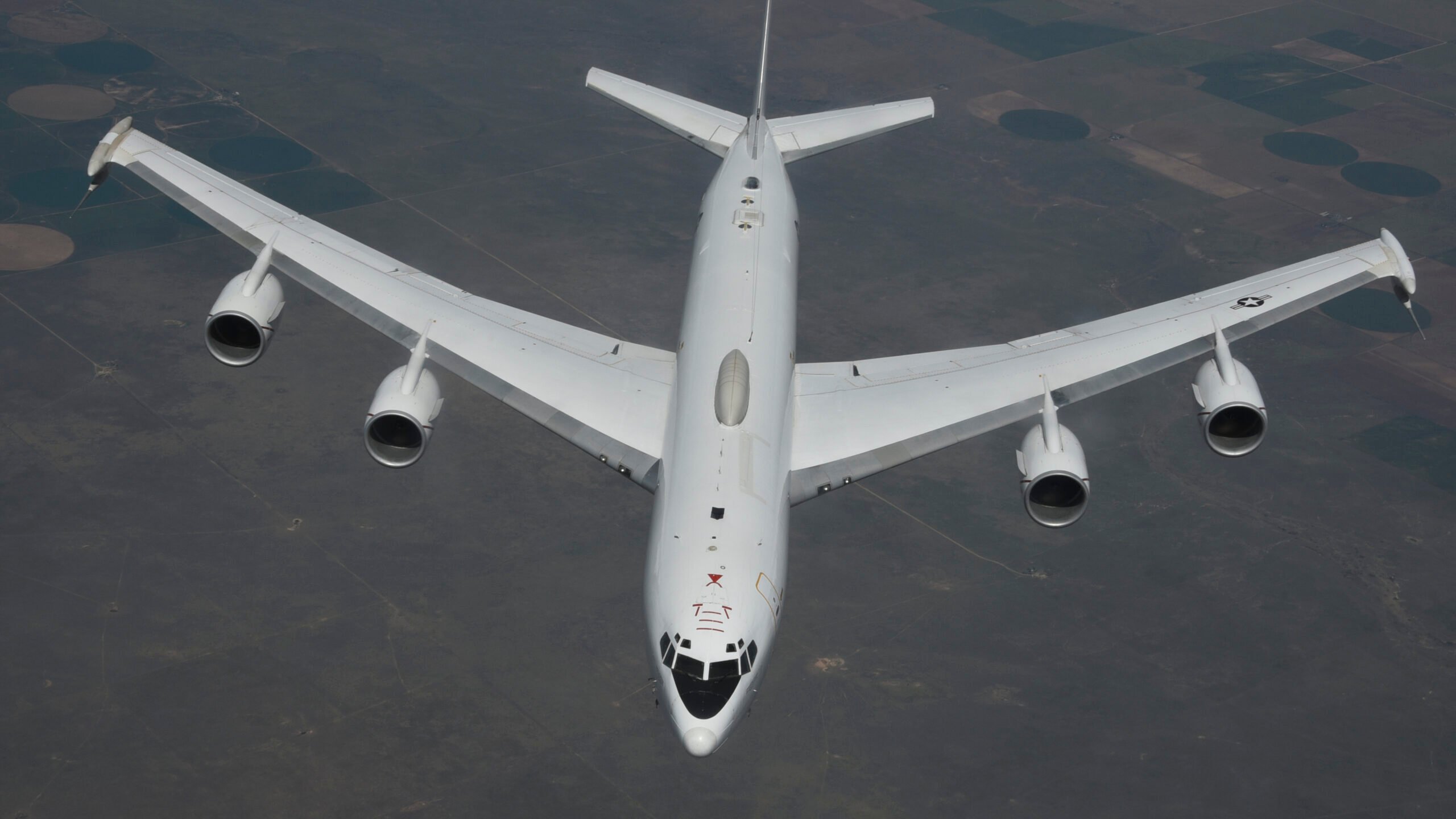The United States Navy recently received the first modernized Northrop Grumman E-6B “Mercury” aircraft, commonly called the “Doomsday” plane.
Russia’s ‘New Age’ Aerial Warfare Blunts Ukrainian Counteroffensive; Russian Tech Batters Western Tech!
The aircraft is the backbone of communication between the President and the nation’s nuclear submarine fleet.
This delivery is a component of a broader contract worth $111 million awarded to Northrop Grumman, aimed at ensuring the long-term operational effectiveness of these aircraft.
Following its departure from the company’s Louisiana facility, the aircraft was transported to Tinker Air Force Base in Oklahoma, where it will be stationed.
Northrop Grumman stated that the E-6B underwent the integration of five new kits, enhancing its command, control, and communications systems.
This upgrade is expected to reinforce the US Navy’s nuclear deterrence capabilities and maintain a vital connection between the President and the nation’s nuclear arsenal, ensuring readiness in the event of an attack.
According to a statement from Naval Air Systems Command, the agency responsible for aircraft procurement, the modifications to the E-6B aircraft were conducted over the past year, and the plane was delivered this month.
The service explained, “The $111 million contract provides six major modifications — called Block II — to improve the aircraft’s command, control, and communications functions connecting the National Command Authority with US strategic and non-strategic forces.”
In a statement, Northrop Grumman also confirmed that the second aircraft, slated for upgrades, has arrived at its Lake Charles facility as planned, and the work on its modernization has commenced.
In February 2022, the integrated maintenance and modification contract was awarded to Northrop Grumman to upgrade the E-6B fleet based on the commercial Boeing 707 platform at the company’s facilities in Lake Charles, Louisiana.
To streamline the modification process and expedite the project, the US Navy has only selected one company. This decision aims to reduce bureaucracy and enhance the efficiency and speed of the modification process for the E-6B fleet.
Under the terms of the contract, Northrop Grumman has been tasked with conducting the overhaul of E-6B Mercury aircraft by the year 2027. The Navy has stated that 12 E-6Bs are scheduled for upgrades.
Scott Pfeiffer, Vice President of Platform Sustainment and Mission Readiness at Northrop Grumman, expressed in a recent statement that the company is utilizing state-of-the-art technology in the modernization process.
This initiative aligns with the Navy’s objective of ensuring resilient, dependable, and enduring airborne command, control, and communications capabilities between the National Command Authority (NCA) and strategic and non-strategic forces, ensuring continuous mission readiness.

E-6B Mercury Aircraft
The E-6B Mercury aircraft is equipped with specialized equipment that enables seamless communication between its operators and the Navy’s submarine fleet, even when the submarines are submerged.
This crucial capability ensures that orders from the President can be delivered if the submarines are required to launch their nuclear weapons.
As per the Navy, the E-6B fleet is operated by Navy Fleet Air Reconnaissance Squadrons 3 and 4 under the umbrella of Strategic Communications Wing One. These squadrons fly the E-6B aircraft from Tinker Air Force Base in Oklahoma.
In addition to the ongoing contract to upgrade the E-6B fleet, Northrop Grumman is also progressing toward competing with Collins Aerospace for the E-XX TACAMO program.
The E-XX TACAMO program aims to create a successor aircraft that will replace the E-6B in the future.

This next-generation aircraft will be developed by integrating a Lockheed-built airframe with a Very Low-Frequency subsystem and designing and integrating “a modernized TACAMO mission system.”
Northrop Grumman and Collins Aerospace will participate in a competitive process to secure the task of integrating the pre-selected equipment and undertaking the design and outfitting of the remaining components for the new aircraft.
A public notice from the Navy, published in April, indicates that the contract is expected to be awarded by September 2024.
In the E-XX TACAMO program competition, Northrop Grumman will lead a team comprising Raytheon and Lockheed Martin business units. The team includes Crescent Systems, a Texas-based company specializing in hardware and software systems engineering, and Long Wave Inc., an Oklahoma-based firm focused on strategic communications systems.
On the other hand, Collins Aerospace, a subsidiary of Raytheon, has disclosed its partnership with Sierra Nevada Corp., a privately held aerospace firm, while choosing not to reveal other team members.
- Contact the author at ashishmichel(at)gmail.com
- Follow EurAsian Times on Google News




